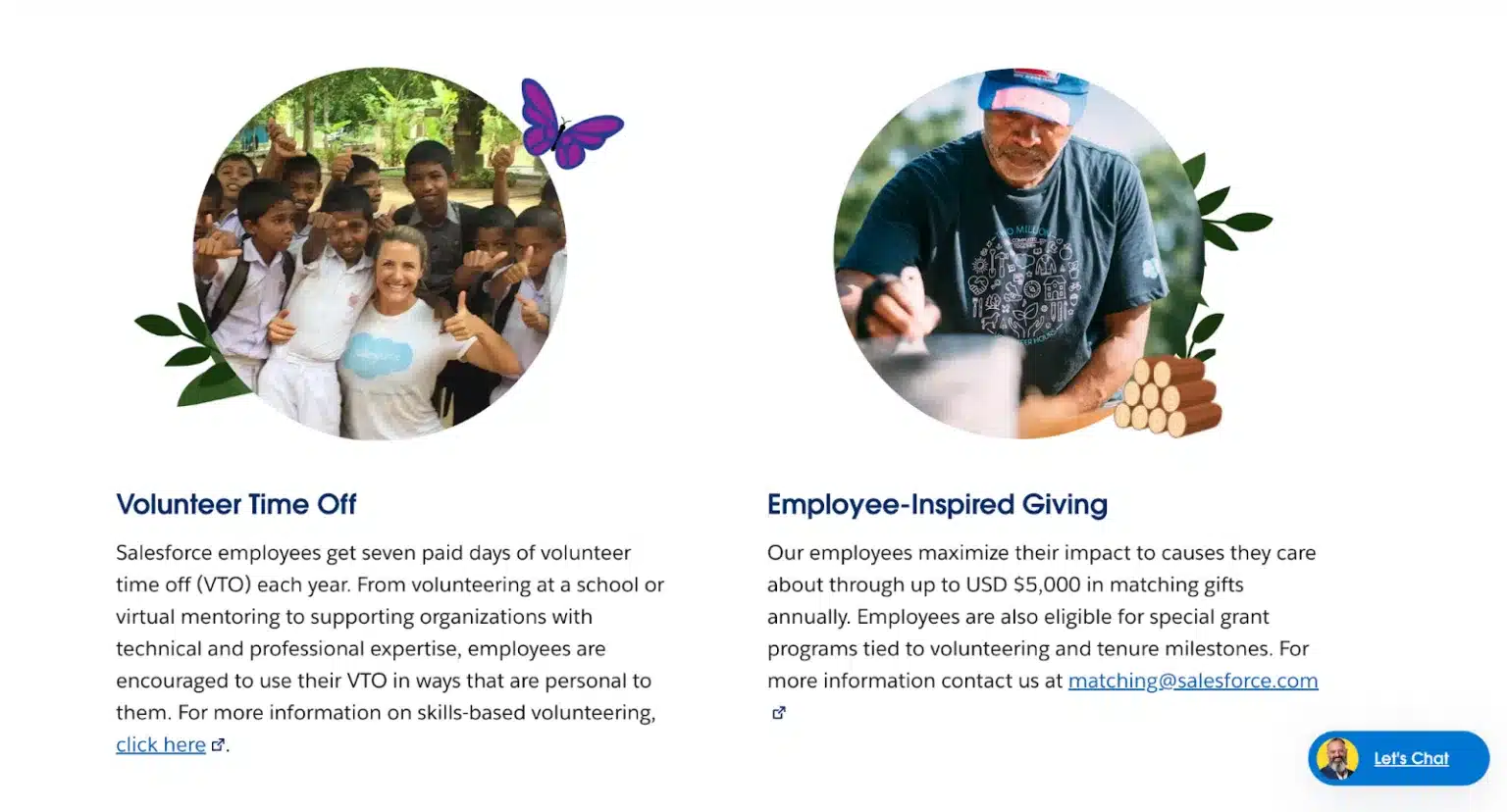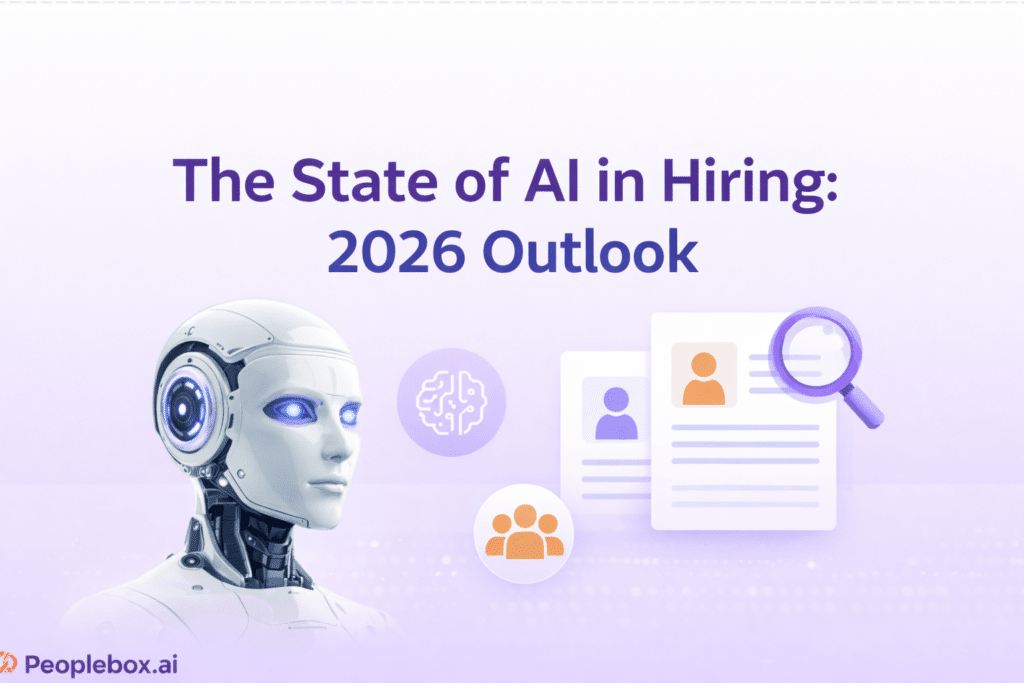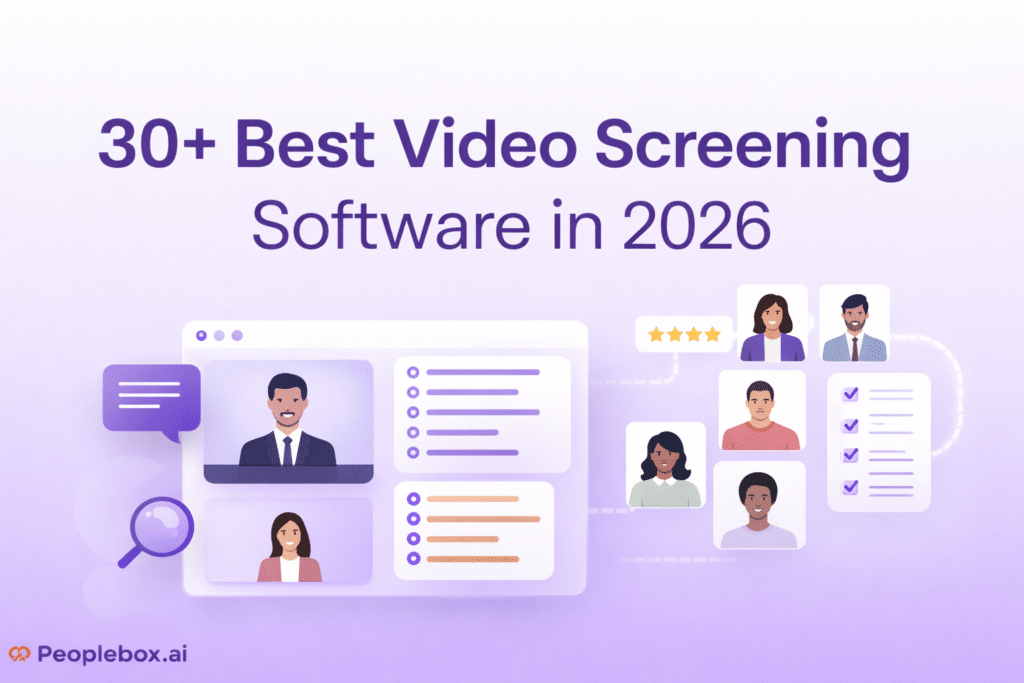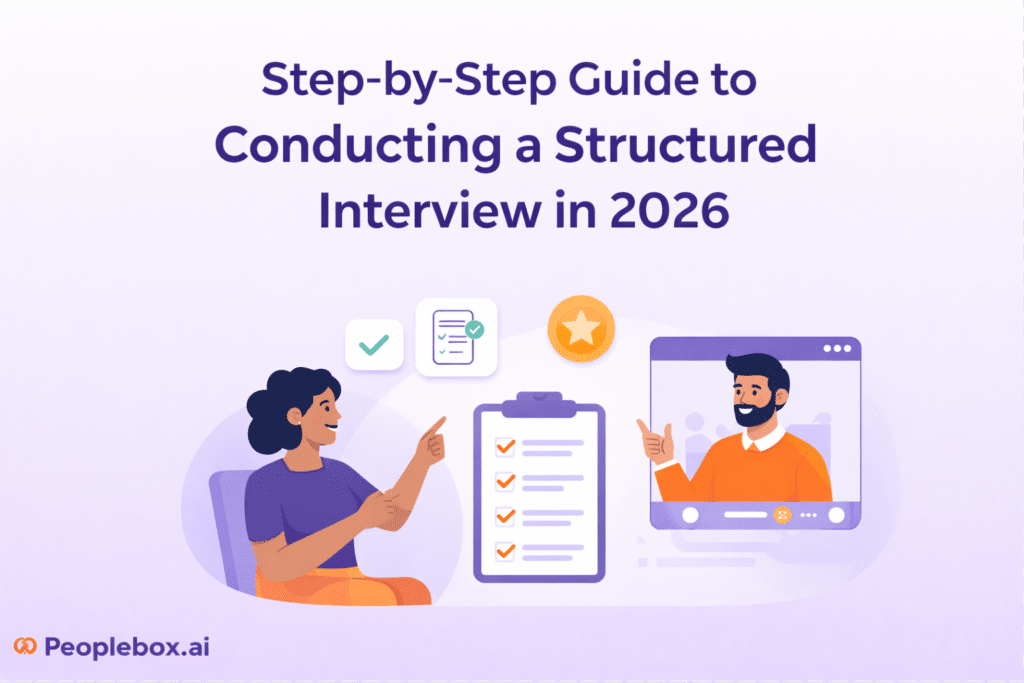While 87% of C-suite executives recognize that the workplace model is key to driving organizational success, only 24% feel prepared to make the necessary changes to manage their workforce better. This gap in readiness poses a significant risk—without a solid talent strategy, companies may struggle to attract, develop, and retain the talent that fuels innovation and growth.
The consequences of a weak talent strategy are far-reaching. Missed opportunities, declining productivity, and stunted growth aren’t just hypothetical risks—they can quickly become a reality, threatening your organization’s future.
But you don’t have to start from scratch. By studying the talent strategies of industry leaders like Google, Netflix, and LinkedIn, you can create a system that attracts and retains top talent and keeps your team engaged and aligned with your company’s vision.
In this blog, we’ll examine top talent strategy examples to help you apply them to drive your organization’s success.
What is a Talent Strategy?
A talent strategy is a plan that helps an organization attract, develop, and retain the right talent or people to achieve its business goals.
To create a talent strategy, HRs like yourself identify the key skills and roles needed for success. You create programs to recruit and grow talent and build a work environment where employees can thrive.
A strong talent strategy ensures that you attract and retain top talent in the competitive market by hiring the right people for the right jobs at the right time.
Why Do Organizations Need a Talent Strategy?
48% of HRs see skill shortage as a top threat to their businesses this year. Many HRs are redesigning their work model to incorporate talent better. Here’s why you need a talent strategy in this scenario:
Enhances employee retention
A well-defined talent strategy helps you retain top talent, and a structured talent strategy provides opportunities for learning and advancement. When employees see a clear path for their development within the organization, they are more likely to stay committed.
Drives organizational performance
A strong talent strategy drives organizational performance by systematically aligning the workforce with the company’s goals. It ensures that HRs identify critical roles and the specific skills required to excel in those positions. Then, you actively recruit new employees and vet present employees through performance reviews to drive better performance.
Source: Peoplebox Case Studies
Supports business growth
A talent strategy ensures that you identify the skills needed in the future and acquire the talent necessary to meet these demands. This way, your organization becomes better positioned to adapt to market changes and achieve long-term growth objectives.
Improves employee engagement
Employee engagement is closely tied to how valued and supported employees feel in their roles. A well-executed talent strategy includes employee engagement activities such as 1:1 meetings and surveys to connect with employees. Engaged employees are more likely to be motivated, productive, and aligned with the company’s vision.
How Can You Create a Talent Strategy for Your Organization?
| Step 1 | Identify Business Goals | To align the talent strategy with the organization’s long-term business objectives. |
| Step 2 | Analyze Current Talent | To assess the current workforce to identify gaps and opportunities for development. |
| Step 3 | Define Key Roles and Competencies | To determine the critical roles and the skills needed to achieve business goals. |
| Step 4 | Develop a Talent Acquisition Plan | To create a plan to attract and recruit the necessary talent. |
| Step 5 | Implement Talent Development Program | To establish training, mentorship, and performance development programs to upskill existing employees. |
| Step 6 | Monitor and Measure Success | To regularly evaluate the effectiveness of the talent strategy and make adjustments as needed |
What Are Some Successful Talent Strategy Examples?
Google: Focus on innovation and continuous learning
Google has been around for decades, but thanks to its innovative talent strategy, the company still remains one of the biggest innovators in tech. Google creates a creative environment for employees to take risks and continuously develop their skills.
Adnan Khan, a Google marketing employee, says, “Google is a dream company for most of us because of its innovation. I’ve had the privilege of witnessing this firsthand. Google’s relentless pursuit of groundbreaking solutions has revolutionized industries and inspired Googlers and others to learn and continuously upskill.
From the intuitive search engine that transformed how we access information to the development of self-driving cars and advancements in artificial intelligence, Google continues to shape the future.”
Talent strategy examples from Google:
Innovation time off: Google is famous for allowing its employees to spend 20% of their time on projects that interest them, even if they aren’t directly related to their job roles. This initiative sparks creativity and leads to innovative products like Gmail and Google News, which were born from these “20% time” projects.
Continuous Learning and Development: Google invests heavily in employee development through various programs. These include on-the-job training, workshops, and access to online learning platforms like Coursera and Udacity.
The 4-tier hiring process: ResearchGate found that Google tests its candidates for “Googliness” through a 4-tier hiring process. The process filters out the wrong people by asking questions in four pre-defined areas: cognitive ability, role-related knowledge, leadership, and “Googliness” (the ability to be Googley). Googliness tested the cultural fit between the individual and the company.
Source: ResearchGate
Non-bureaucratic structure: Google works with the mindset of a small company. Here, innovative ideas can come from anyone and everywhere through a bottom-up process.
The company’s flat organizational structure and open communication channels empower employees to share ideas freely and build a culture of transparency and trust.
Netflix: Emphasis on freedom and responsibility
Netflix has redefined talent management with its bold approach that centers on freedom and responsibility. This approach is designed to attract top talent by offering a unique work environment that provides both autonomy and accountability.
Talent Strategy Examples from Netflix:
- High Performance with Accountability: Netflix’s approach to performance is straightforward—hire the best, pay them well, and expect them to perform at the highest levels. The company is known for its high-performance culture, where employees are expected to deliver outstanding results.
Those who don’t meet the standards are let go but with a generous severance package. For example, Netflix CMO Marian Lee bagged the top spot on Forbes World’s Most Influential CMOs list.

- “No Rules” culture: Netflix’s talent strategy follows the “no rules” approach. Instead of setting rigid policies, Netflix trusts employees to act in the company’s best interest.
For instance, there are no formal vacation policies—employees are free to take as much time off as they deem necessary as long as their work is completed. They should only take care of the company’s interest. For example, employees working in finance are not expected to take leave at the end of the quarter
- Continuous Feedback and Development: While Netflix prefers autonomy, it also provides continuous feedback. This helps them understand where they excel and where they need to improve.
Additionally, Netflix encourages employees to take ownership of their career development and provides them with the necessary resources to grow and succeed.
LinkedIn: Building a strong employee brand
LinkedIn, the world’s largest professional network, has made building a strong employee brand a key part of its talent strategy. LinkedIn’s strategy is unique because it blends branding with talent management, creating a powerful way to showcase its work culture.
Talent Strategy Examples from LinkedIn:
- Employee advocacy program: LinkedIn encourages its employees to be active on the platform by sharing content, insights, and their experiences at the company. This Program enhances LinkedIn’s reputation as a great place to work.
- LinkedIn Elevate: LinkedIn uses a tool called “LinkedIn Elevate” that helps employees share company-approved content with their networks. LinkedIn continuously tracks which content performs well and improves its strategy.

Source: LinkedIn Advocacy Handbook
- Inclusive hiring practices: LinkedIn is committed to diversity and inclusion in its hiring process. The company uses tools like LinkedIn Talent Insights to find and attract diverse candidates, and it provides training to recruiters and hiring managers to reduce bias.
- “InDay” Program: LinkedIn encourages employees to participate in an “InDay,” where they can focus on personal development, volunteer work, or passion projects once a month. This initiative promotes innovation and personal growth while supporting a healthy work-life balance.
Unilever: Commitment to diversity and inclusion
Diversity and inclusion are at the center of Unilever’s talent strategy. The company’s approach to diversity and inclusion impacts every stage of its employee lifecycle, from recruitment to development and retention.
Talent Strategy Examples from Unilever:
- Inclusive recruitment practices: Unilever actively seeks to eliminate biases in the hiring process through the use of technology and structured interviews. For example, Unilever uses AI-powered tools to screen applicants, ensuring that hiring decisions are based on merit and reducing the influence of unconscious bias.
- Gender balance initiatives: Unilever has started initiatives like leadership development programs targeting women and flexible working arrangements. Through these programs, Unilever has successfully increased the representation of women in leadership roles.
- Employee resource groups (ERGs): Unilever provides ERGs to raise awareness about diverse groups’ issues and advocate for positive organizational change. ERGs at Unilever include groups focused on gender equality, LGBTQ+ inclusion, racial and ethnic diversity, and more.
Amazon: Data-driven talent management
Amazon’s talent management strategy is heavily data-driven, emphasizing analytics to inform every stage of the employee lifecycle. This approach allows Amazon to maintain high standards in recruitment, optimize employee performance, and ensure that its workforce is aligned with the company’s rapid growth and innovation needs.
Talent Strategy Examples from Amazon:
- Bar Raiser program: One of Amazon’s most well-known talent management initiatives is the “Bar Raiser” program. It involves a group of trained employees participating in the hiring process to ensure that new hires meet Amazon’s high standards. Bar Raisers are not part of the hiring team, which helps to reduce bias and maintain objectivity. They use data from interviews, assessments, and past candidate performance to make decisions.
- Career Choice program: Amazon’s Career Choice program pre-pays 95% of tuition for courses in high-demand fields, even if the skills aren’t directly related to the employee’s current role at Amazon. This prepares its workforce for future roles and promotes employee development.

Source: Career Choice Amazon
- Pivot program: Amazon’s Pivot program gives underperforming employees a clear path to improvement through structured feedback and support. Employees in the Pivot program get a chance to turn their performance around with specific, measurable goals. If they succeed, they can continue to grow within Amazon.
- Amazon leadership principles: Amazon’s 16 Leadership Principles include “Customer Obsession,” “Ownership,” and “Invent and Simplify,” which help Amazon ensure that new hires will fit the company’s culture and contribute to its long-term goals. The consistent application of these principles across all company levels helps maintain a strong, cohesive corporate culture.
Microsoft: Emphasis on continuous learning and upskilling
Microsoft’s talent strategy focuses on continuous learning and upskilling. This keeps the company competitive in the fast-changing tech industry. By prioritizing skill development, Microsoft ensures its employees are equipped to drive innovation and contribute to the company’s growth.
Talent Strategy Examples from Microsoft:
- Growth mindset culture: Promoted by CEO Satya Nadella, the growth mindset encourages employees to embrace challenges and learn continuously. This mindset is reinforced through regular training and development programs.
- Microsoft Learn: Through Microsoft Learn, employees can access various courses and certifications in critical areas like cloud computing, AI, and data science.

Source: Microsoft Learn
- AI Business School: Microsoft’s AI Business School offers courses on implementing AI in business, available to all employees. This initiative ensures employees are equipped to contribute to Microsoft’s AI-driven innovation strategy.
- LinkedIn Learning Integration: Microsft employees can access LinkedIn Learning’s vast course library, tailored to their roles and career goals, supporting continuous development across various skills.
Coca-Cola: Focus on leadership development and employee engagement
Coca-Cola’s talent strategy prioritizes leadership development and employee engagement. It ensures that the workforce is motivated and equipped to lead the organization.
Talent Strategy Examples from Coca-Cola:
- Leadership development programs: Coca-Cola has established robust leadership development programs designed to identify and nurture future leaders within the organization. These programs, such as the “Coca-Cola Leadership Experience” and “Leading with Purpose,” focus on building essential leadership skills, including strategic thinking, decision-making, and people management.

Source: Career Development Coca-Cola
- Employee engagement surveys: Coca-Cola regularly conducts comprehensive engagement surveys to gather feedback on job satisfaction, work-life balance, and alignment with the company’s mission. The insights from these surveys are used to implement targeted initiatives that address employee concerns.
- Diversity and Inclusion Initiatives: Coca-Cola has implemented various initiatives to promote an inclusive workplace, including Employee Resource Groups (ERGs), to create an environment where all employees feel included and respected.
- Recognition and rewards: Coca-Cola acknowledges outstanding performance and contributions to the company’s success. It offers both financial and non-financial rewards.
Adobe: Performance management transformation
Adobe has revolutionized its talent strategy by transforming traditional performance management into a more dynamic and employee-centric process. This shift has been critical to Adobe’s ability to foster innovation, improve employee satisfaction, and maintain a high-performing workforce.
Talent Strategy Examples from Adobe:
- Check-in system: Adobe replaced the traditional annual performance review with a more flexible and continuous “Check-in” system. It encourages informal conversations about goals, performance, and career development between managers and employees.

Source: Adobe Check-in
- Focus on employee development: Adobe’s new performance management system trains managers to provide constructive feedback that helps employees grow in their roles and advance in their careers.
- Increased manager accountability: Adobe’s new system holds managers accountable for the development and engagement of their teams. Managers are expected to coach and mentor their employees actively, and their success in these areas is also part of their performance evaluation.
- Employee Empowerment: Adobe’s encourages employees to take ownership of their career development. The Check-in system encourages employees to set their own goals and actively participate in discussions about their progress.
Salesforce: Employee well-being and corporate culture
Salesforce has built a reputation as a leading tech company and a pioneer in prioritizing employee well-being and fostering a strong, values-driven corporate culture. Salesforce’s talent strategy focuses on creating a supportive work environment where employees feel valued, engaged, and motivated to work.
Talent Strategy Examples from Salesforce:
- Ohana culture: The “Ohana” culture is a Hawaiian term meaning family. This culture emphasizes that employees, customers, partners, and communities are all part of the Salesforce family. This inclusive and supportive environment helps employees feel connected to the company’s mission and each other and fosters a strong sense of belonging and purpose.
- Employee well-being programs: Salesforce invests heavily in employee well-being through various programs that address physical, mental, and emotional health. The company offers comprehensive health benefits, on-site wellness centers, mental health support, and flexible work arrangements.
Salesforce also encourages employees to take “Wellness Days” and provide additional paid time off to focus on their personal well-being.
- Mental health and resilience initiatives: Salesforce has implemented specific programs to support employee mental well-being. The company provides access to mental health professionals and offers mindfulness and meditation sessions. It has also launched the “B-Well” program, which provides resources for managing stress and building resilience.
- VTO (Volunteer Time Off) program: Salesforce’s VTO program allows employees to take up to 56 hours of paid time off each year to volunteer for causes they care about. This initiative is part of Salesforce’s broader commitment to corporate social responsibility and employee engagement.

Source: Salesforce employee volunteering
IBM: Strategic workforce planning with a strong focus on diversity
IBM’s talent strategy is deeply embedded in its business operations. It ensures that the company meets its current workforce needs and anticipates future demands.
Talent Strategy Examples from IBM:
- Strategic workforce planning: IBM uses data analytics and AI to forecast future skill needs and recruit talent with the skills required to drive innovation and stay competitive. This involves identifying critical roles and competencies, particularly in areas like AI, quantum computing, and cloud services.
- Diversity and inclusion as business imperatives: IBM actively works to increase the representation of women, minorities, and other underrepresented groups at all levels, making diversity a core component of its business strategy.
- Skills academy and re-skilling initiatives: IBM’s Skills Academy and re-skilling programs offer employees opportunities to learn new skills and transition into roles that align with IBM’s future needs.
- AI-powered talent management: IBM analyzes workforce data to identify skills gaps and recommend personalized learning paths. This data-driven approach optimizes talent management and ensures that the right people are in the right roles.
Implement Rock- Solid Talent Strategy With Peoplebox
Whether it’s continuous learning, embracing diversity, or transforming performance management, talent strategy is the key to driving success. It keeps your team motivated and aligned with business goals.
But putting these strategies into practice isn’t always easy. That’s where Peoplebox comes in. Peoplebox helps you streamline your talent management processes. With robust features like performance reviews and employee engagement, Peoplebox makes it easier to align your team with your company’s objectives.
With Peoplebox, you can build a high-performing workforce that’s ready to meet your business challenges head-on. Want to see how Peoplebox can help you implement a rock-solid talent strategy? Book a demo today and start transforming your team’s potential into success.






